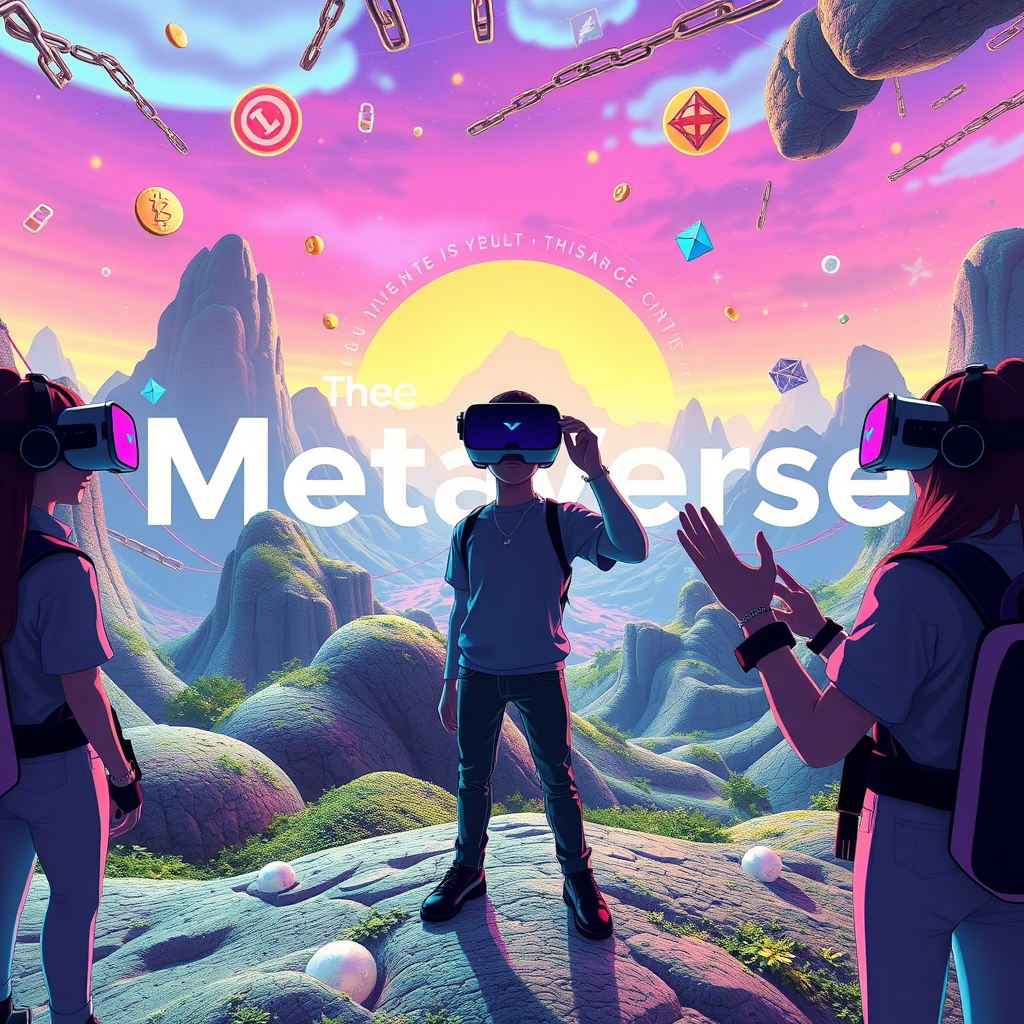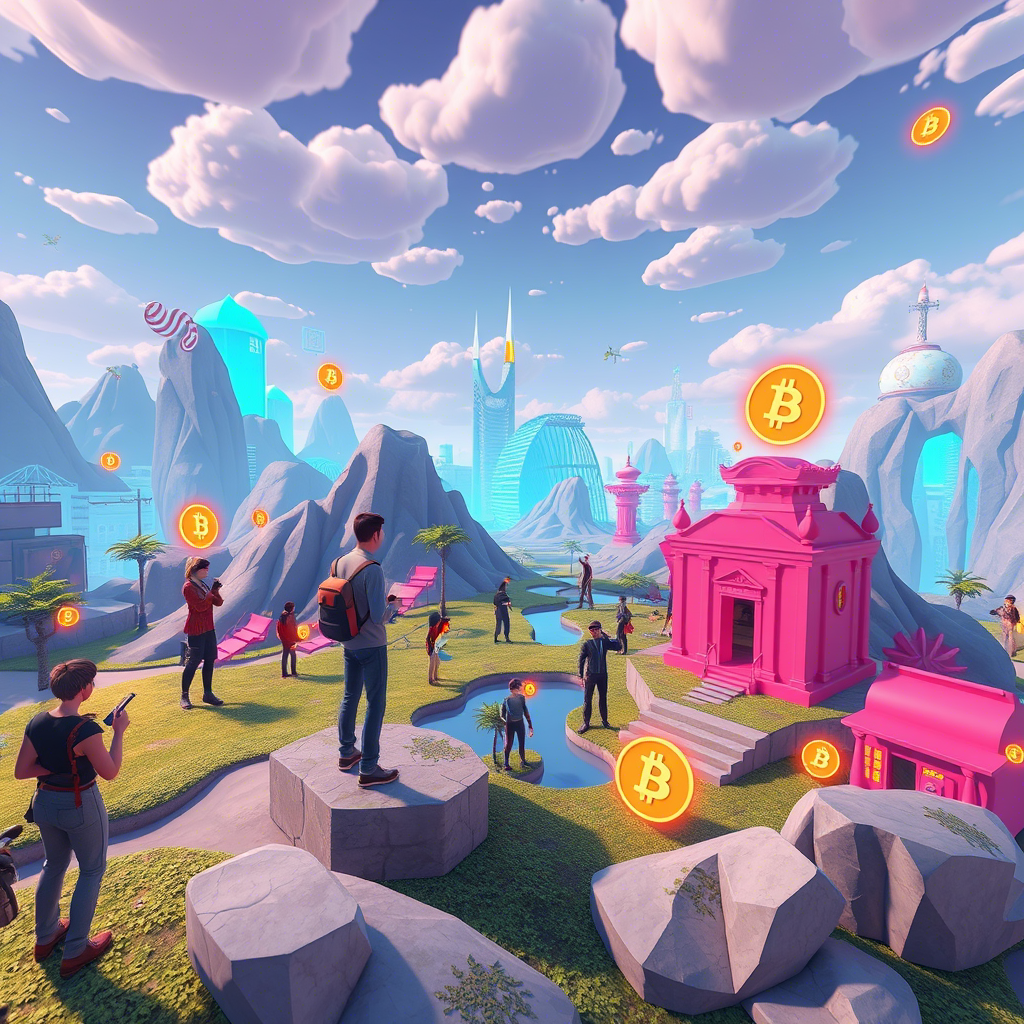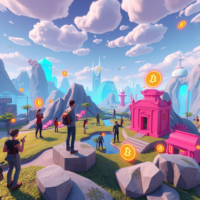n recent years, the concept of the Metaverse has taken center stage in the tech world, sparking excitement and curiosity among developers, investors, and enthusiasts alike. But what exactly is the Metaverse, and how does it intersect with the world of cryptocurrency? In this article, we’ll explore the relationship between blockchain technology, cryptocurrencies, and the Metaverse, uncovering how these innovations are reshaping our understanding of virtual worlds.
What Is the Metaverse?
The term “Metaverse” was first introduced by Neal Stephenson in his 1992 science fiction novel Snow Crash . It refers to a collective virtual space where users can interact with each other and digital environments in real-time. Think of it as an immersive extension of the internet—a place where people can work, play, socialize, shop, and even own property, all within a shared digital universe.
Today, companies like Meta (formerly Facebook), Microsoft, and NVIDIA are investing heavily in building their versions of the Metaverse. These virtual worlds aim to combine augmented reality (AR), virtual reality (VR), artificial intelligence (AI), and blockchain technology to create seamless, interactive experiences for users.
But why is the Metaverse so closely tied to crypto? Let’s dive deeper into the connection.
Why Crypto and Blockchain Are Essential for the Metaverse
Blockchain technology and cryptocurrencies are playing a pivotal role in shaping the future of the Metaverse. Here’s why:
1. Decentralization
One of the core principles of blockchain is decentralization—the idea that no single entity controls the network. This aligns perfectly with the vision of the Metaverse, which seeks to provide users with ownership and control over their digital identities, assets, and experiences.
In traditional online platforms, companies like Google or Amazon hold significant power over user data and content. However, in the decentralized Metaverse, blockchain ensures that users have sovereignty over their digital lives. For example:
- Users can store their personal information securely on blockchain-based wallets.
- They can buy, sell, and trade digital goods without relying on intermediaries.
This level of autonomy fosters trust and transparency, making the Metaverse a more inclusive and equitable space.
2. Digital Ownership Through NFTs
Non-fungible tokens (NFTs) are unique digital assets stored on blockchain networks. In the context of the Metaverse, NFTs allow users to truly own virtual items such as avatars, skins, land plots, and art pieces.
For instance:
- In games like Axie Infinity or The Sandbox , players can purchase rare characters or in-game items as NFTs.
- Platforms like Decentraland enable users to buy and develop virtual real estate using MANA, its native cryptocurrency.
By leveraging NFTs, the Metaverse creates a thriving economy where digital assets hold real-world value. This opens up exciting opportunities for creators, gamers, and entrepreneurs who want to monetize their skills and creations.
3. Interoperability Across Platforms
Another advantage of blockchain in the Metaverse is interoperability—the ability for different platforms to communicate and share resources seamlessly. Unlike siloed ecosystems like Apple’s App Store or Steam, blockchain allows users to transfer their assets across multiple Metaverse platforms.
Imagine owning a virtual car in one game and being able to use it in another. Or purchasing a piece of digital art in one marketplace and displaying it in your virtual home in another platform. Blockchain makes this possible by standardizing asset formats and enabling cross-platform compatibility.
4. Security and Immutability
Security is a top priority in any virtual environment, especially when dealing with valuable digital assets. Blockchain’s immutability ensures that once a transaction is recorded, it cannot be altered or deleted. This provides peace of mind for users who invest time and money into the Metaverse.
Additionally, smart contracts—self-executing agreements coded directly onto the blockchain—automate processes like buying, selling, and trading assets. These contracts eliminate the need for third-party verification, reducing costs and increasing efficiency.
Popular Metaverse Projects Powered by Crypto
Several projects are already leading the charge in integrating blockchain and crypto into the Metaverse. Here are some notable examples:
1. Decentraland (MANA)
Decentraland is one of the most well-known Metaverse platforms powered by blockchain. It allows users to purchase and develop virtual land using its native token, MANA. Owners can build anything from virtual shops to art galleries, creating unique experiences for visitors.
Key Features:
- Fully decentralized governance through DAOs (Decentralized Autonomous Organizations).
- Support for NFTs and user-generated content.
- A vibrant community of creators and investors.
2. The Sandbox (SAND)
The Sandbox is another popular Metaverse project that emphasizes creativity and collaboration. Users can design their own games, assets, and experiences using VoxEdit, a free 3D modeling tool. These creations can then be sold as NFTs on the platform’s marketplace.
Key Features:
- Native token SAND used for transactions and governance.
- Partnerships with brands like Atari, Snoop Dogg, and Deadmau5.
- Focus on community-driven development.
3. Axie Infinity (AXS)
While primarily a play-to-earn game, Axie Infinity also incorporates elements of the Metaverse. Players can collect, breed, and battle Axies (digital creatures) while earning Smooth Love Potion (SLP), a cryptocurrency that can be exchanged for real money.
Key Features:
- Integration with Ethereum and Ronin sidechain for faster transactions.
- Strong emphasis on economic incentives for players.
- Growing ecosystem of tools and utilities.

The Role of Cryptocurrencies in the Metaverse Economy
Cryptocurrencies serve as the backbone of the Metaverse economy, facilitating transactions, incentivizing participation, and driving innovation. Here’s how they contribute:
1. Monetization Opportunities
Users can earn income in various ways within the Metaverse:
- Selling digital goods and services.
- Completing tasks or quests in games.
- Renting out virtual properties.
For example, in Decentraland , landlords can charge rent to other users who wish to host events or set up businesses on their land. Similarly, in Axie Infinity , skilled players can generate substantial earnings by participating in tournaments.
2. Global Accessibility
Cryptocurrencies break down geographical barriers, allowing anyone with an internet connection to participate in the Metaverse economy. Whether you’re in New York or New Delhi, you can access the same opportunities and compete on equal footing.
3. Financial Innovation
The Metaverse is giving rise to new financial models, such as decentralized finance (DeFi) and fractional ownership. These concepts enable users to lend, borrow, and invest in digital assets without traditional banking systems.

Challenges Facing the Metaverse and Crypto
Despite its immense potential, the integration of blockchain and crypto into the Metaverse faces several challenges:
1. Scalability Issues
As more users join the Metaverse, blockchain networks may struggle to handle the increased transaction volume. High fees and slow processing times could deter adoption. Fortunately, Layer-2 solutions like Polygon and Optimism are helping address these concerns.
2. Regulatory Uncertainty
Governments around the world are still grappling with how to regulate cryptocurrencies and NFTs. Unclear regulations could stifle innovation and create legal risks for Metaverse platforms.
3. User Adoption
Many people remain unfamiliar with blockchain technology and may find it intimidating to navigate. Educating users about the benefits and mechanics of the Metaverse will be crucial for widespread adoption.
The Future of the Metaverse and Crypto
Looking ahead, the convergence of the Metaverse and crypto holds tremendous promise. As technology continues to evolve, we can expect:
- More advanced VR and AR experiences.
- Enhanced AI-driven interactions.
- Broader acceptance of digital currencies as legitimate forms of payment.
Moreover, the Metaverse could redefine industries ranging from entertainment to education to real estate. Imagine attending virtual concerts, taking online classes in immersive settings, or touring virtual homes before buying them—all powered by blockchain and crypto.
Conclusion
The Metaverse represents the next frontier in human interaction, blending physical and digital realms into a unified experience. By harnessing the power of blockchain and cryptocurrencies, this emerging ecosystem offers unprecedented opportunities for innovation, creativity, and economic growth.
As we stand on the brink of this technological revolution, it’s clear that the Metaverse and crypto are inseparable forces driving the future of digital life. So whether you’re a gamer, investor, or entrepreneur, now is the perfect time to explore this exciting new world!

